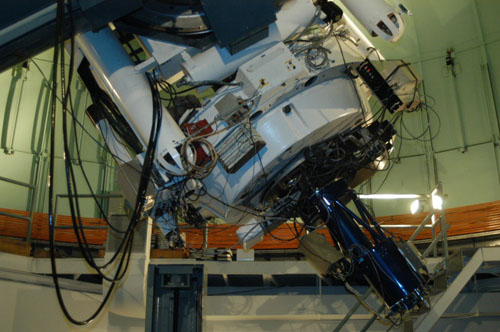CPAPIR


Technical Specifications |
|
|---|---|
| Instrument Name | Caméra PanorAmique Proche Infra-Rouge |
| Acronym | CPAPIR |
| First Light | December 2004 |
| Wavelength Range | 0.8 - 2.5 microns (infrared) |
| Instrument Type | Wide Field Imager |
| Status | Operational at the Mont-Mégantic Observatory |
CPAPIR (Caméra PAnoramique Proche Infra-Rouge) was developed as a part of the Ph.D. project of Étienne Artigau, who is now an OMM researcher. This camera achieved its first observation of a star’s light in December 2004 and, although it has been utilised on other telescopes occasionally, it predominantly operates at the OMM where it is the most frequently used instrument.
Specialising in near-infrared observations, CPAPIR is adept at studying young brown dwarfs located in the vicinity of our Solar System, where they emit relatively high levels of infrared light. Brown dwarfs are celestial objects that are too massive to be considered planets but do not achieve the necessary mass for nuclear fusion to become stars. This camera primarily functions as a survey tool, boasting a broad field of view covering half a degree, allowing astronomers to efficiently scan and study celestial objects in this wavelength range.
For more information on how to use CPAPIR as an OMM user, please see our Instruments’ Guide.